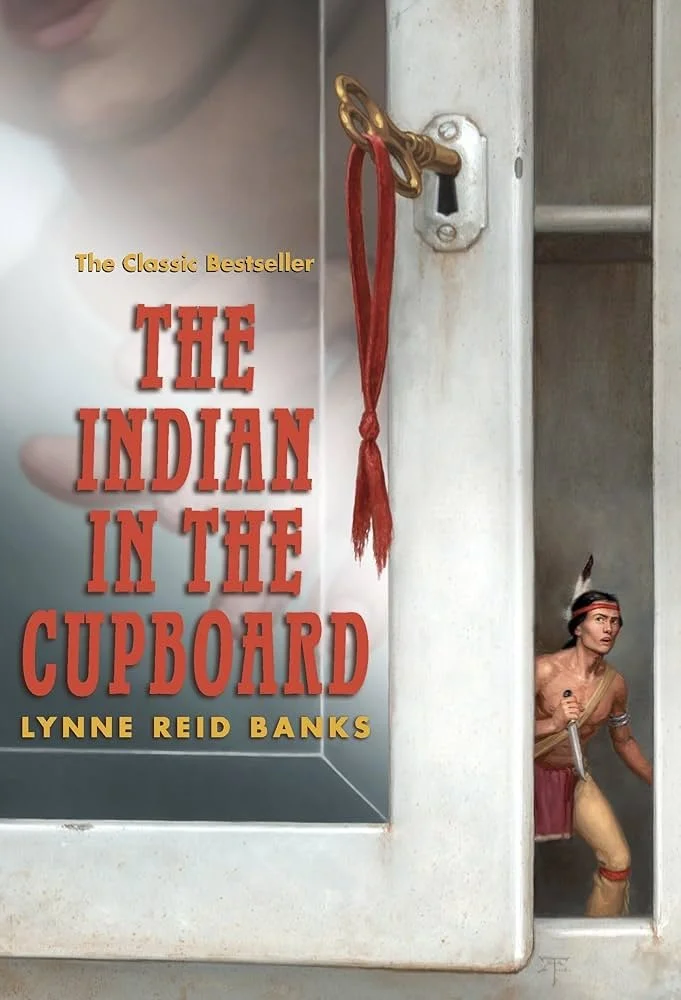When a little boy named Omri first sees that the plastic toy he placed inside of a cupboard is transformed into a real, live Indian, he immediately makes a move to pick him up. But, he learns quickly that his desires are not the only ones that matter. The Indian stabs him in the thumb. While the wound causes little in the way of physical damage, it teaches Omri the beginning of an important lesson: this power is more serious than it might seem. So begins Lynn Reid Banks’s The Indian in the Cupboard.
Through Omri’s experience with the cupboard, my students learn alongside him that even the smallest person is still a person. The Indian, Little Bear, is more than just a toy—he is an adult man with a history as an Indian brave, and surprisingly, a belt full of scalps. Although he is fierce, he requires Omri’s help to get supplies, food, water, and even medical care when he is wounded by his horse. Omri must act in the role of parent to this tiny man, while also being careful to give him the respect he deserves.
The value of the story can best be appreciated by seeing what my students had to say upon finishing the book. Here are some of the things they said about the lesson Omri learns from Little Bear:
“Omri sees that Little Bear is small, but he is mighty and brave. Size doesn’t mean everything.”
“Omri learns how to see things from other peoples’ point of view. When his best friend Patrick acts selfish and foolish because he wants his own tiny living person, Omri understands. He, too, wanted to misuse the cupboard at first. So when Patrick becomes foolish, Omri knows they are still best friends.”
“Omri learns that life is important, and that the pain he can feel is the same pain that smaller people can feel.”
“Life is life, regardless of size.”
As usual, my students surprise me with the depth of their insight. All of these came as answers to the question, “What does Omri learn from Little Bear?” Reading great literature sharpens the mind and enlarges the soul.
The Indian in the Cupboard features drama, humor, and adventure. But, most importantly, it carries the theme of the quiet power of sympathy. Omri, through protecting the brave man who just happens to be three inches tall, learns an essential part of being human: seeing something from someone else’s point of view. My students, too, learn this beautiful lesson while they read the book.
My students read The Indian in the Cupboard with close attention, and now, it is a part of the way they move through the world. It has affected the way they interact with other people (or even animals), especially ones that are smaller and might need their protection. One student told me about how much more carefully she holds her hamster now. Another student talked about how difficult it is to hold back from snuggling her baby cousin, but how she has to make herself do it because she knows her cousin hates it. Another student told me that this book made her stop killing spiders—that she now catches them and brings them outside.
Reading The Indian in the Cupboard with young children becomes so much more than an academic exercise. When my students read this story, they see it through Omri’s eyes, and they learn his lesson with him. They, too, deepen their understanding about what it means to be human.
There is nothing quite like The Indian in the Cupboard for teaching children the power of sympathy.
